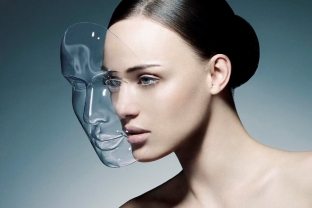Not only cosmetologists, but even many of their patients already know that fibroblasts are responsible for rejuvenating processes in the skin and that their activity should be stimulated by cosmetic products or procedures. However, not every one of us is able to immediately answer what happens in the process of such stimulation of dermal cells, how much and how often they should be stimulated, why aging skin needs it. Is the stimulation of fibroblasts always beneficial to the skin, how not to harm it at the same time, our portal considered.
Rejuvenation Rules: Areas of Responsibility for Anti-Aging
Dermal cells with the prefix "fibro-" two types are known, and each of them performs its function in maintaining the youthfulness of the skin. Fibrocytes are more mature, stable cells, their task is to control the structural state of the skin in certain areas. It is fibrocytes that synthesize glycosaminoglycans to create the extracellular matrix, and the most famous of them – hyaluronic acid. Fibrocytes also produce collagen of different types, and depending on the type and severity of skin damage (whether it is a sunburn, hard peeling or age-related changes), the ratio of different types of collagen produced changes.
Fibroblasts – these are younger cells that can move between the layers of the skin, turn into other types of cells, if it is necessary for damaged skin to regenerate. The skin owes to fibroblasts the processes that tighten the edges of the wound, restore the integrity of the damaged epidermis.
Despite the different characteristics and functions of cells with the prefix "fibro-", they are all called fibroblasts. But even in different layers of the skin, they act differently, synthesizing the protein compounds it needs.
In the upper, papillary dermis, fibroblasts produce mainly collagen of the 1st and 3rd types, although there are also types 12, 16, while the collagen fibers are thin and relatively chaotically located. The proteins tenascin-C and decorin are also expressed here. In the deeper, reticular layer of the dermis, type 3 collagen production predominates, but there is also type 4 collagen. Collagen fibers are thicker and more ordered than in the papillary layer. In addition, elastin, tenascin-X, versican proteins are synthesized in the reticular layer.
Due to differences in the work of fibroblasts, the papillary layer determines the appearance of the skin and its elasticity, and the reticular – its strength and elasticity.

Beneficial and harmful reactions of skin fibroblasts to external influences
Numerous scientific studies have shown that skin fibroblasts are able to respond to various external stimuli, including exposure to chemicals and physical factors – cosmetics and procedures. However, this reaction does not always have a positive effect on the skin.
For example, the negative reaction of fibroblasts to excessive exposure to solar ultraviolet radiation is well known: they begin to synthesize much less collagen, elastin and hyaluronic acid than the skin requires. In addition to UV rays, some other factors cause a similar negative reaction in fibroblasts:
- infrared;
- hypothermia;
- exposure to toxic substances and metal salts;
- deficiency of vitamins and microelements;
- stress;
- various diseases.
The cosmetologist must remember that if the patient's skin is weakened by stress, hypovitaminosis or other of the above factors, then any stimulating effect on fibroblasts may be meaningless or even harmful.
Read also: Erasing signs of aging from the face: effects and results of redermalization
So, for example, if skin with signs of photodamage or stress is exposed to laser or radio wave radiation, then instead of the desired synthesis of collagen types 1 and 3, the production of collagen of other types may be activated, which threatens to appear micro scars and undesirable changes in skin relief.
In cosmetology, to influence skin fibroblasts in order to activate positive anti-aging changes, epidermal growth factor is used, which, although it has relatively large molecules, is quite capable of penetrating to the papillary layer in the composition of occlusive masks, activating the synthesis of collagen and hyaluronic acid.
Sodium hyaluronate is able to penetrate deep into the layers of the skin and activate the processes of hyaluronic acid production, due to which, with regular use, it improves skin tone and reduces the severity of wrinkles.
Retinol, when used regularly, can significantly reduce the amount of metalloproteinase enzymes in the dermis. As a result, the content of collagen, elastin and hyaluronic acid is significantly increased.
Niacinamide has similar fibroblast-stimulating activity as growth factors, significantly enhancing collagen and hyaluronic acid production. Many peptides, some types of algae, antioxidants have a positive effect on the activity of fibroblasts.
It is important to know that it is impossible to activate fibroblasts by a single effect on the skin or by point applications at long intervals. Only regular use of stimulants can give the expected positive rejuvenating result.
When planning the correction of age-related changes, it is imperative to prepare the skin in advance, to provide it with resources for cellular activity. Only then can the desired effect be expected from stimulation of fibroblasts – improve skin elasticity, reduce the appearance of wrinkles.







Add a comment